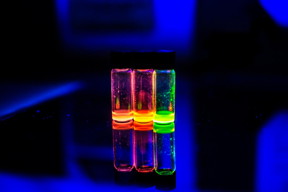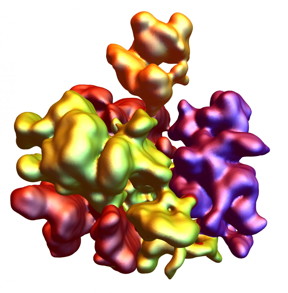Science
Young Sun-like Star Shows a Magnetic Field Was Critical for Life on the Early Earth - See more at: https://www.cfa.harvard.edu/news/2016-06#sthash.YtOY5GLY.dpuf

- Read more
- 348 reads
Sweet 'quantum dots' light the way for new HIV and Ebola treatment

Quantum dots are fluorescent crystals in which the color of the emitted light is dependent on the size of the crystal.
- Read more
- 370 reads
Experimentation and largest-ever quantum simulation of a disordered system explain quantum many-particle problem

Figure illustrates puddles of localized quasi-condensates found using a quantum Monte Carlo simulation of trapped atoms in a disordered lattice. Individual puddles, consisting of 10-20 particles each, are incoherent relative to each other. The Bose glass is composed of these puddle-like structures.
- Read more
- 419 reads
Purification of Industrial Wastewater by Application of Ultrasound Waves, Oxide Nanoparticles Simultaneously

- Read more
- 382 reads
New Nanosorbent Detects Tiny Amounts of Anticancer Drugs in Body

- Read more
- 389 reads
Innovative catalyst fabrication method may yield breakthrough in fuel cell development: Kyushu University research group develops new method for creating highly efficient gold nanoparticle catalysts for fuel cells

- Read more
- 411 reads
New nanoparticle technology to decipher structure and function of membrane proteins

According to the researchers, the new Salipro technology may offer a wide range of potential applications; from structural biology to the discovery of new pharmacological agents.
- Read more
- 340 reads
IMF Executive Board Concludes 2015 Article IV Consultation with Montenegro
On February 19, 2016 the Executive Board of the International Monetary Fund (IMF) concluded the Article IV consultation with Montenegro.
Montenegro’s economy has rebounded in the past year, and strong growth looks set to continue in 2016, at just over 4 percent. The medium-term outlook is boosted by the construction of the Bar-Boljare highway.
- Read more
- 362 reads
Irregular silicon wafer breakage studied in real-time by direct and diffraction X-ray imaging

On the left are the direct transmission images. On the right are the diffraction images.
- Read more
- 314 reads
Nanoscale rotor and gripper push DNA origami to new limits: Dietz lab's latest DNA nanomachines demonstrate dynamics and precision

Rotor mechanism assembled from 3-D DNA components.
- Read more
- 296 reads
Human Rights
Fostering a More Humane World: The 28th Eurasian Economic Summi

Conscience, Hope, and Action: Keys to Global Peace and Sustainability

Ringing FOWPAL’s Peace Bell for the World:Nobel Peace Prize Laureates’ Visions and Actions

Protecting the World’s Cultural Diversity for a Sustainable Future

Puppet Show I International Friendship Day 2020

